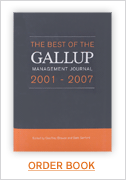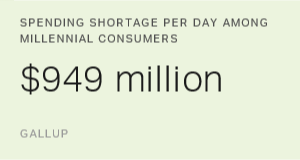A recent announcement by Apple Computer seems at odds with the actions that a company would take to build its business. Apple announced that it would halt sales of its products through Circuit City stores. Instead, Apple will focus its sales efforts on moving product either directly through its Web site or through Apple retail outlets opened during the past year.
 |
On the surface, this might seem strange. Why would Apple choose to abandon a powerful and far-reaching means for distributing its products? Circuit City boasts more than 600 superstore sales outlets in 161 markets. This retailer knows how to move computers and has proven that it can sell products, to the tune of about a billion dollars a month.
Surely Apple would want to capitalize on the customers who regularly visit Circuit City stores, who often are looking for just what Apple wants to sell them. Why walk away from this market?
Apple mentions its own retail outlets, but it currently operates only 27 of them. That's a far cry from the more than 600 stores Circuit City could offer. Apple has just three stores in New York, one in Texas, and none in either Washington or Oregon. Why, at a time when the company is promoting its new iMac and PowerMac G4 products, would they limit their market horizons?
The answer is simple. Apple wants to control customer contact and is willing to trade off "reach" for impact. It would rather reach a smaller number of customers so it can consistently put its best marketing foot forward with each of them. And Apple is acknowledging that it will build its brand and its brand relationships one customer at a time.
People power in brand building
Why remove Apple products from Circuit City? It's not because Circuit City carries multiple brands, and thus a customer entering one of their stores may well confront an HP Pavilion, a Compaq Presario, a Sony VAIO, and a Toshiba Satellite before ever meeting a PowerMac. After all, Procter & Gamble doesn't remove its products from Safeway or Wal-Mart simply because these chains carry multiple brands of the laundry soaps, diapers, toothpastes, and potato chips P&G seeks to promote.
The world of computer marketing is very different. Computer brands don't sell themselves. Nor can Apple count on a clear price advantage in order to direct customer choice. Computers are more like cars than like toothpaste. They are sold by people, regardless of whether consumers have contact with these people by phone or face-to-face.
In fact, Gallup Organization research offers evidence of just how powerful these people can be when it comes to building an enduring connection between a company and its customers. Sales and service representatives, whether they're selling autos or consumer electronics, have a profound impact on the customer relationship.
This same Gallup research underscores a fundamental need for every brand and the reason why Apple reached its decision. Without a strong base of brand confidence, there can be no continuing customer relationship. And what builds customer confidence? Product performance and reliability, for starters. But this research found that the expertise and helpfulness of customer representatives are almost as powerful as product performance. Customers consider these reps an essential part of the brand. These "people" dimensions represent critical components for Apple as it attempts to build connections with customers. Connections cannot be created and sustained through product performance alone.
Keep the focus on the brand
This is the dilemma that has confronted Apple. Should the company continue to capitalize on Circuit City's widespread distribution system? The retailer could provide a steady stream of consumer traffic, but Apple would be attempting to extend its brand connection through people with mixed allegiance to various computer brands and with varying degrees of Apple brand expertise. Should Apple spend money to bring people to Circuit City through a variety of advertising and promotion promises, only to see them build brand connections with Circuit City, rather than Apple?
Apple decided to focus on building Apple-only brand connections with its prospects and customers. That's an expensive solution with considerable risk. Building, staffing, and supporting a retail store network is far more expensive than taking advantage of an existing one.
Apple opted for a solution that the company believes will afford it a far larger share of a much smaller pie.
Apple's brand-building solution is far less like that of the typical packaged goods product marketer or consumer electronics manufacturer and far more akin to how automakers such as Saturn, Acura, Lexus, and Infiniti approach their brand-building challenges. As these companies set out to introduce new vehicle brands, they created entirely new brand-focused and brand-committed dealerships. That's also the route that fashion retailers like The Gap have taken, and it's essentially the same strategy that Ray Kroc employed to build absolute consistency at each customer touchpoint at every McDonald's store.
This is the route of maximum contact control. It's neither the quickest nor the cheapest route to customer relationship management. Yet after weighing the trade-offs between reach and impact, Apple choose to take this new and ambitious direction. If 1984 signaled a time of great change for Apple and its products, 2002 seems every bit as momentous for Apple and its brand relationships.
